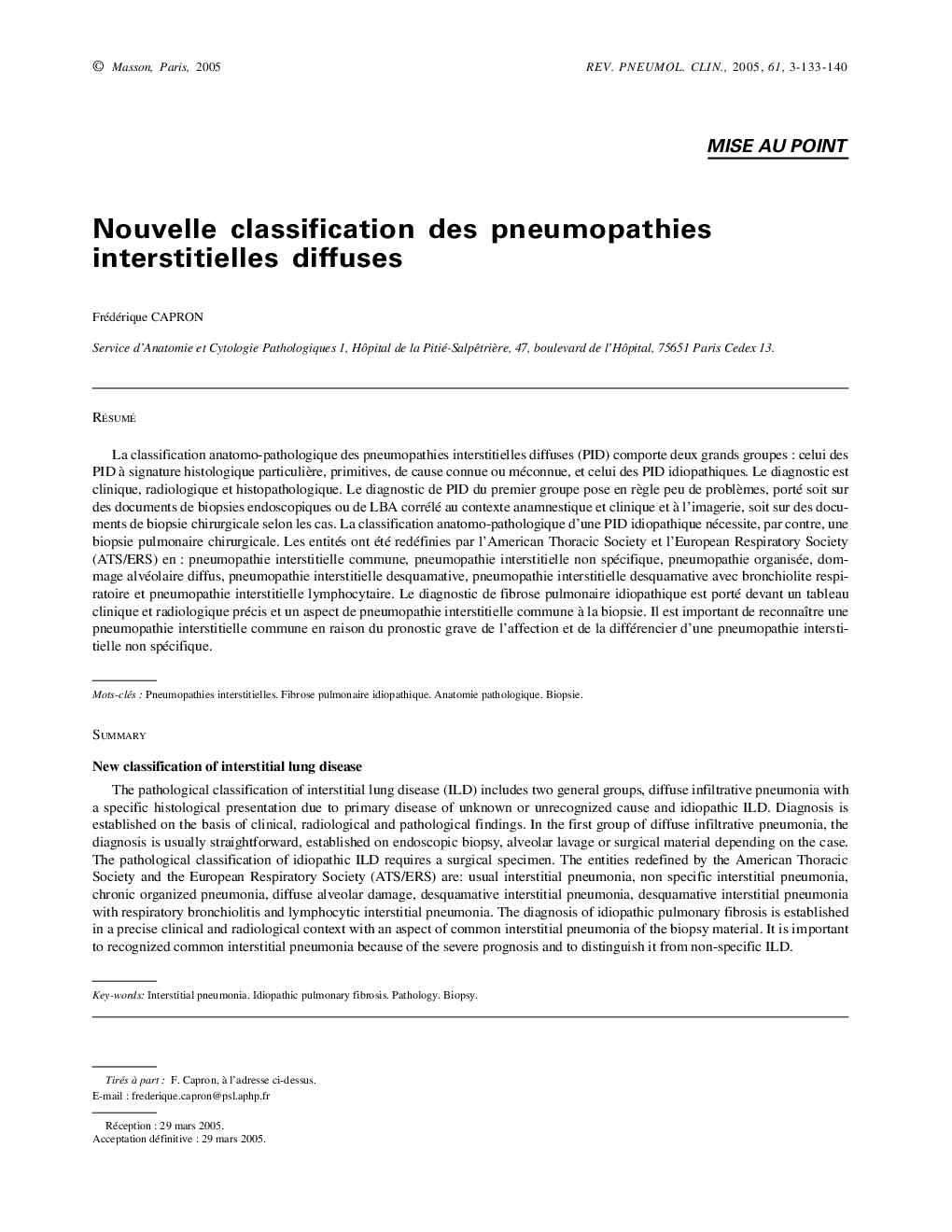| Article ID | Journal | Published Year | Pages | File Type |
|---|---|---|---|---|
| 9284436 | Revue de Pneumologie Clinique | 2005 | 8 Pages |
Abstract
The pathological classification of interstitial lung disease (ILD) includes two general groups, diffuse infiltrative pneumonia with a specific histological presentation due to primary disease of unknown or unrecognized cause and idiopathic ILD. Diagnosis is established on the basis of clinical, radiological and pathological findings. In the first group of diffuse infiltrative pneumonia, the diagnosis is usually straightforward, established on endoscopic biopsy, alveolar lavage or surgical material depending on the case. The pathological classification of idiopathic ILD requires a surgical specimen. The entities redefined by the American Thoracic Society and the European Respiratory Society (ATS/ERS) are: usual interstitial pneumonia, non specific interstitial pneumonia, chronic organized pneumonia, diffuse alveolar damage, desquamative interstitial pneumonia, desquamative interstitial pneumonia with respiratory bronchiolitis and lymphocytic interstitial pneumonia. The diagnosis of idiopathic pulmonary fibrosis is established in a precise clinical and radiological context with an aspect of common interstitial pneumonia of the biopsy material. It is important to recognized common interstitial pneumonia because of the severe prognosis and to distinguish it from non-specific ILD.
Keywords
Related Topics
Health Sciences
Medicine and Dentistry
Infectious Diseases
Authors
Frédérique Capron,
